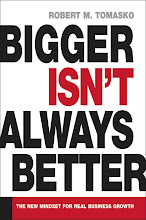December 02, 2008
Creating new products: Ford vs. Microsoft
When Ford committed itself to building a gas-electric hybrid SUV, it faced the challenge of creating the most technically advanced product it had ever mass-produced.6 Even though the company has been making cars for over 100 years, these have all run with one motor. Hybrids have two, and they require a host of new-to-Ford technologies to make the two motors work together.
To develop this car, Ford pulled researchers out of its lab and sat them next to the design engineers who were building the car prototype. These and other members of the hybrid team stayed in close physical proximity throughout the project, and the entire team stayed together until the project was completed.
Just like the SUV they were creating, this group had two engines. One member of the team, Prabhaker Patil, was a Ph.D. scientist. His job was to inspire creativity and invention. Another group leader, Mary Ann Wright, a veteran of many successful Ford car launches, was is the feet-on-the-ground person. Her job was to keep things on schedule. She was the disciplinarian who forced the scientists, who naturally like to keep refining (and refining) their work, to wrap things up.
Ford's head of product development also ran interference for the group with the company's top management. He freed the team from the normal time-consuming management reviews and progress report requirements, allowing it to focus on the must-win technical battles of the project, not the needs of the bureaucracy.
Contrast the hothouse process Ford used to play a critical game of catch-up with its rival hybrid maker, Toyota, with the product creation system that Bill Gates designed for Microsoft.
There, responsibility for each new product passes from the "incubator" of an idea, usually a researcher in one of Microsoft's divisions, to the product "definer" (someone in marketing or a division manager), and then finally to the "owner," which is a development team, which supervises the programmers who do the real work.
Notice that the originator of the idea is not considered its owner and is not kept with the project through its completion.
A host of other Microsoft managers play varying roles throughout the development cycle. Some are participants; others have reviewer or approver/coach roles.
Microsoft calls this integrated innovation, although its emphasis seems to be more on fostering the integration than on fostering the innovation.
Complex matrix systems like this are almost guaranteed to destroy momentum and result in long-delayed product introductions — which, when you think about it, might make sense for a company like Microsoft, whose new products primarily compete with its established products.
[Excerpt from Bigger Isn’t Always Better, Chapter 10 “Master Momentum and Bounce.”]
To develop this car, Ford pulled researchers out of its lab and sat them next to the design engineers who were building the car prototype. These and other members of the hybrid team stayed in close physical proximity throughout the project, and the entire team stayed together until the project was completed.
Just like the SUV they were creating, this group had two engines. One member of the team, Prabhaker Patil, was a Ph.D. scientist. His job was to inspire creativity and invention. Another group leader, Mary Ann Wright, a veteran of many successful Ford car launches, was is the feet-on-the-ground person. Her job was to keep things on schedule. She was the disciplinarian who forced the scientists, who naturally like to keep refining (and refining) their work, to wrap things up.
Ford's head of product development also ran interference for the group with the company's top management. He freed the team from the normal time-consuming management reviews and progress report requirements, allowing it to focus on the must-win technical battles of the project, not the needs of the bureaucracy.
Contrast the hothouse process Ford used to play a critical game of catch-up with its rival hybrid maker, Toyota, with the product creation system that Bill Gates designed for Microsoft.
There, responsibility for each new product passes from the "incubator" of an idea, usually a researcher in one of Microsoft's divisions, to the product "definer" (someone in marketing or a division manager), and then finally to the "owner," which is a development team, which supervises the programmers who do the real work.
Notice that the originator of the idea is not considered its owner and is not kept with the project through its completion.
A host of other Microsoft managers play varying roles throughout the development cycle. Some are participants; others have reviewer or approver/coach roles.
Microsoft calls this integrated innovation, although its emphasis seems to be more on fostering the integration than on fostering the innovation.
Complex matrix systems like this are almost guaranteed to destroy momentum and result in long-delayed product introductions — which, when you think about it, might make sense for a company like Microsoft, whose new products primarily compete with its established products.
[Excerpt from Bigger Isn’t Always Better, Chapter 10 “Master Momentum and Bounce.”]
